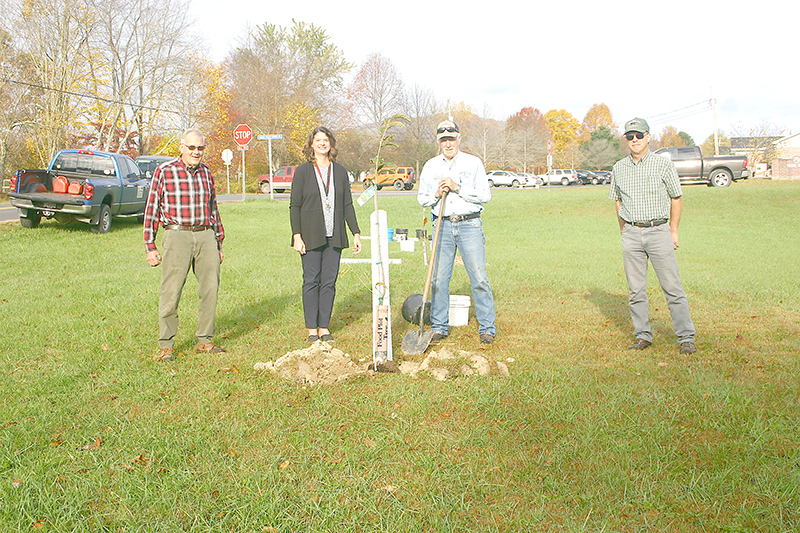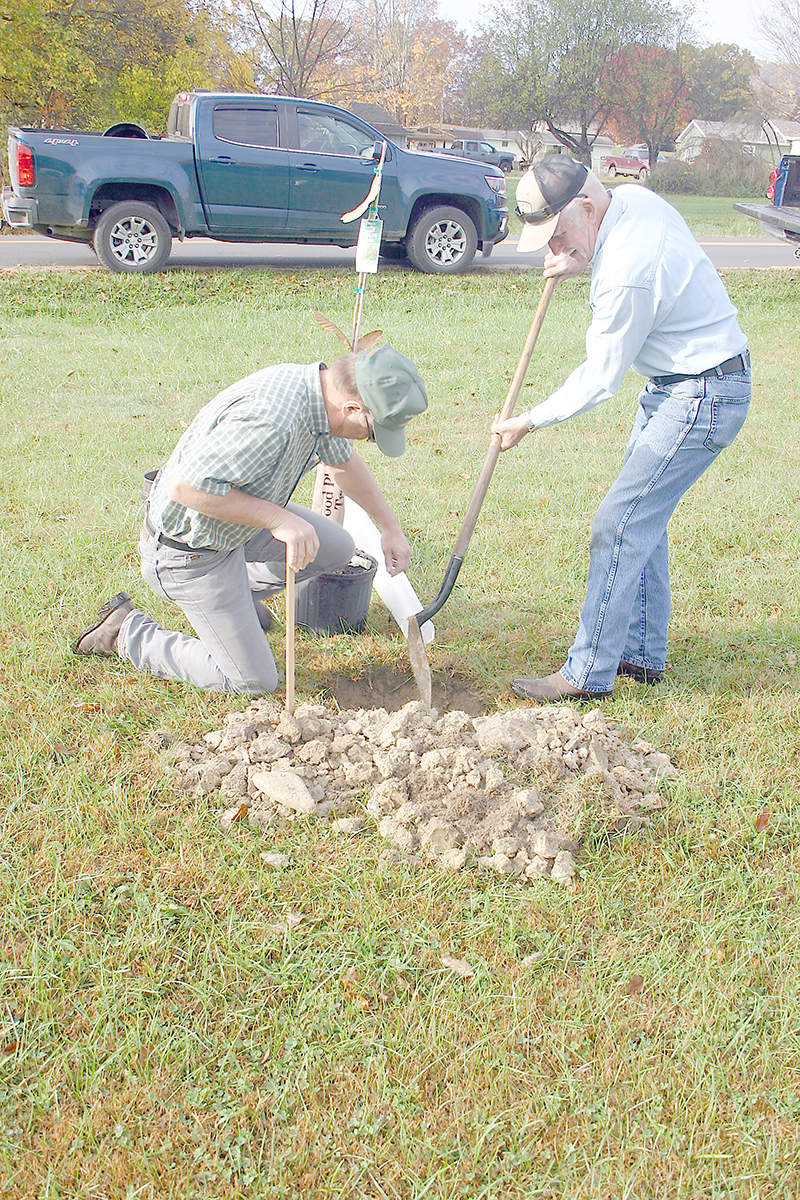
By Heather Clower
The Parsons Advocate
Natural Resource Conservation District Supervisors Jim Nester and Donald Adams became aware of a pilot program offered to the Wes-Mon-Ty 12 county region through the Resource Conservation and Development group. The purpose is to plant hybrid American Chestnut trees in at least groups of two to encourage pollination and monitor the progress of growth and take note at the first sign of blight.
One of the requirements for the project was the trees had to be planted on public property. Fred Sikarskie serves on the Tree Committee for the Coty of Parsons and recommended planting the young trees at Tucker Valley Elementary Middle School to be included amongst a multitude of other tree species that have been planted there and to offer a unique learning opportunity for the students at the school. Sikarskie has also been involved in planting several of the trees at the school, including Butternut Trees from the largest Butternut Tree in W.Va.
According to The American Chestnut Foundation, “More than a century ago, nearly four billion American chestnut trees were growing in the eastern U.S. They were among the largest, tallest, and fastest-growing trees. The wood was rot-resistant, straight-grained, and suitable for furniture, fencing, and building. The nuts fed billions of wildlife, people, and their livestock. It was almost a perfect tree that is until a blight fungus killed it more than a century ago. The chestnut blight has been called the greatest ecological disaster to strike the world’s forests in all of history.” Records indicate that the American Chestnut survived all adversaries for forty million years and within just 40 years, they were gone.
What once dominated half of the Eastern portion of the United States as a prime building agent and nut bearer was all of a sudden rotting and falling to the forest floor. What made these trees so desirable besides the pleasing aesthetics, the wood was extremely strong where structures needed the added strength and they were rot resistant making them ideal for the foundation layer of cabins. Posts, railroad ties, poles, and flooring were also made from American Chestnut.
The nut production was so high that they would be loaded into railroad cars and shipped to the suburban and urban areas during peak ripeness to be sold fresh or roasted. Other trains would deliver loads to the rural American’s who could use the nuts to feed their hogs and cattle to fatten them before going to the market.
At the turn of the century, Cryphonectria parasitica, the causal agent for chestnut blight was introduced. The effects of the disease reduced the once-dominant tree species in the Eastern United States to an early succession stage shrub. Fortunately, the blight does not affect the root system of the tree, deeming the species as functionally extinct. They regrow up through the dead stump, but unfortunately, the blight takes over and they are killed again.
Dr. Robert Dunstan began with an attempt to cross a hardy, American species of grapes with a french wine grape in hopes it would be resilient to a virus called Pierce’s Disease. After trial and error, he realized the offspring were always sterile. Therefore, he doubled the number of chromosomes using the mutagenic chemical called Colchacine, which enabled the hybrids to become fertile.

Dunstan was a member of the Northern Nut Growers Association which aided in his desire to receive from surviving American Chestnuts that he crossed with the Chinese Chestnut to produce the Dunstan Hybrid Chestnut. Nester read that since beginning selling this hybrid variety in 1981, he has not had a single documented case of blight in his trees.
Upon learning of the project, Nester and Adams set out to secure some trees to plant within Tucker County. These hybrids can begin to bear nuts at only three to five years of age and can grow to a height of 40 to 60 feet tall.
Nester, Adams, Sikarskie, and TVEMS Principal Kelly Thompson joined in the planting of the trees that will line the lower grassy area as you enter the drive to the school. Holes were dug 30 feet apart to allow for ample room to grow and then lined with topsoil to aid in the roots to take hold. A growing agent was added to the bottom of the hole to stimulate the growth before the hole was covered up. The goal is to have a sign installed near the trees to explain the history and the project to bring the American Chestnut back.
Thompson said she was excited when Sikarskie reached out and asked if the school could become home to these experimental trees. She said several teachers typically have their students outdoors, planting, growing, experimenting, and monitoring that will benefit immensely from these trees.
If the project deems successful, the hope is to get a cost-share program to be developed that will encourage and assist landowners to plant the hybrid trees. “This is the beginning, we hope with these projects we’re doing here, to start people planting more of them and get a reforestation of the American Chestnut in West Virginia, which we had at one time,” said Nester.


